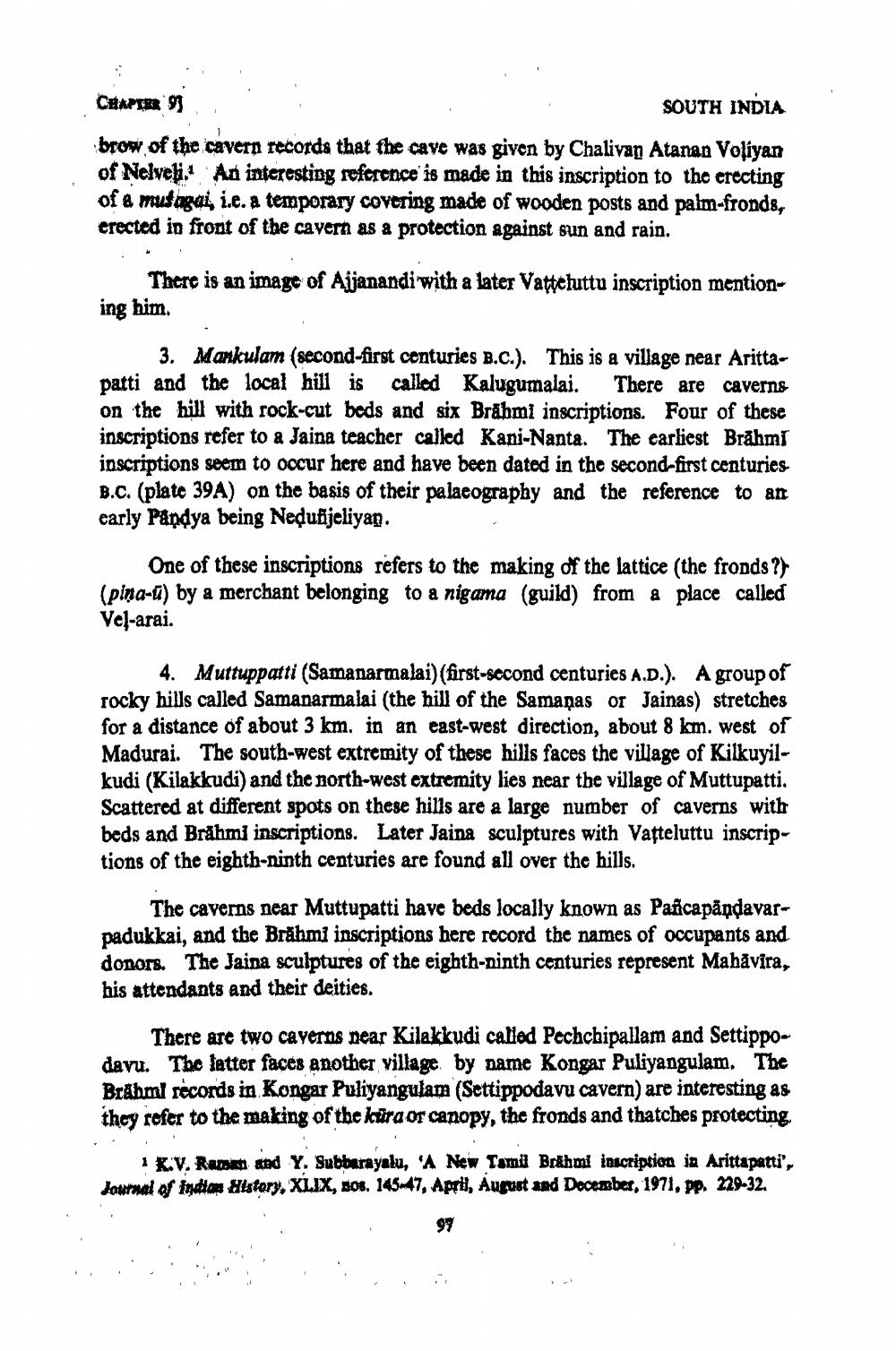________________
CHAPTER
SOUTH INDIA brow of the cavern records that the cave was given by Chalivan Atanan Voliyan of Nelveti. An interesting reference is made in this inscription to the erecting of & mus agai, i.e. a temporary covering made of wooden posts and palm-fronds, crected in front of the cavern as a protection against sun and rain.
There is an image of Ajjanandi with a later Vattehuttu inscription mentioning him.
3. Mankulam (second-first centuries B.C.). This is a village near Arittapatti and the local hill is called Kalugumalai. There are caverns on the hill with rock-cut beds and six Brahmi inscriptions. Four of these inscriptions refer to a Jaina teacher called Kani-Nanta. The earliest Brahmi inscriptions seem to oocur here and have been dated in the second-first centuries B.C. (plate 39A) on the basis of their palaeography and the reference to an early Pandya being Nedubijeliyan.
One of these inscriptions refers to the making of the lattice (the fronds ?) (piņa-u) by a merchant belonging to a nigama (guild) from a place called Vel-arai.
4. Muttuppatti (Samanarmalai) (first-second centuries A.D.). A group of rocky hills called Samanarmalai (the hill of the Samaņas or Jainas) stretches for a distance of about 3 km. in an east-west direction, about 8 km. west of Madurai. The south-west extremity of these hills faces the village of Kilkuyilkudi (Kilakkudi) and the north-west extremity lies near the village of Muttupatti. Scattered at different spots on these hills are a large number of caverns with beds and Brahmi inscriptions. Later Jaina sculptures with Vatteluttu inscriptions of the eighth-ninth centuries are found all over the hills.
The caverns near Muttupatti have beds locally known as Pafcapāndavarpadukkai, and the Brahmi inscriptions here record the names of occupants and donors. The Jaina sculptures of the eighth-ninth centuries represent Mahavira, his attendants and their deities.
There are two caverns near Kilakkudi called Pechchipallam and Settippodavu. The latter faces another village by name Kongar Puliyangulam. The Bráhml records in Kongar Puliyangulam (Settippodavu cavern) are interesting as they refer to the making of the Kura or canopy, the fronds and thatches protecting,
K.V. Ramsa and Y. Subbarayaku, "A New Tomi Bakhmi inscription in Arittapatti', Journal of India History, XLIX, Nov. 145-47, April, August and December, 1971, pp. 229-32.




